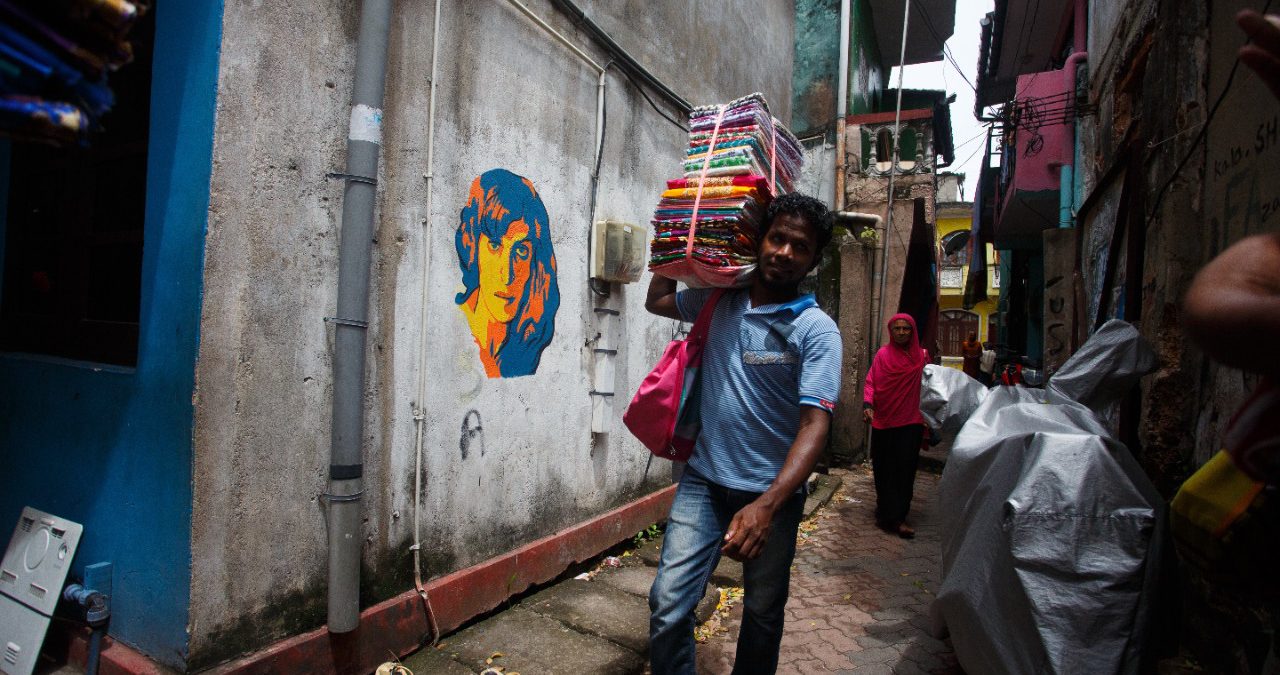
Keep up with our latest news and projects!

Colombo, Sri Lanka’s capital, is undergoing a make-over. After years of civil war, the city is set to become a Singapore-like economic powerhouse. Chinese and Indian-fuelled investment has poured into the country to make this dream come true. But at what cost? Slave Island, an old neighbourhood in the heart of the city, is where the skyscrapers are going up faster than one can imagine. What used to be a unique and vibrant urban district is transformed beyond recognition. The quarter is quickly being swallowed up by the shiny new apartment buildings rising around it. Artist Firi Rahman has lived his whole life in Slave Island, and as more buildings in his neighbourhood are threatened by demolition, he has gathered up his artist friends and started a campaign to save its soul. #WeAreFromHere is a unique artistic initiative that maps stories of ordinary and extraordinary locals to highlight the unique multicultural community of Slave Island.
Slave Island — locally known as Kompannaveediya — has lived many lives. In the colonial days, when it was still an island in a crocodile-infested lake, the Portuguese and later the Dutch considered it the ideal location for a slave prison. The name stayed long after the slaves were set free, and the area grew into what it is today: a hub of vibrant activity where African, Indian, Javanese, Burgher, Moor and most prominently, Malay heritage are visible at every street corner. You can hear it in the music, see it in the colours and taste it in the food. No longer an island, it is a diverse community made up of people from all faiths and walks of life, which is unique in Colombo.
Slave Island is about to undergo another reincarnation. The location, just south of the city’s Central Business District Fort, is triple-A, so the small alleyways have become valuable property. The eviction of residents in an area of approximately 160 acres in the heart of Colombo 02, began in 2012. Some 70,000 households are now being relocated to newly constructed apartment-style housing in other parts of the city. It is part of an ambitious $287 million ‘City of Colombo Urban Regeneration Project’ spearheaded by the Urban Development Authority. The scale and speed of the project is mind-boggling, with some streets being completely erased from the map, and with them their social fabric and memories of place. Java Lane is one of them. Here, the only thing the developers left standing is the green and white neighbourhood mosque, now surrounded by nothing but apartment blocks, disconnected from its community.
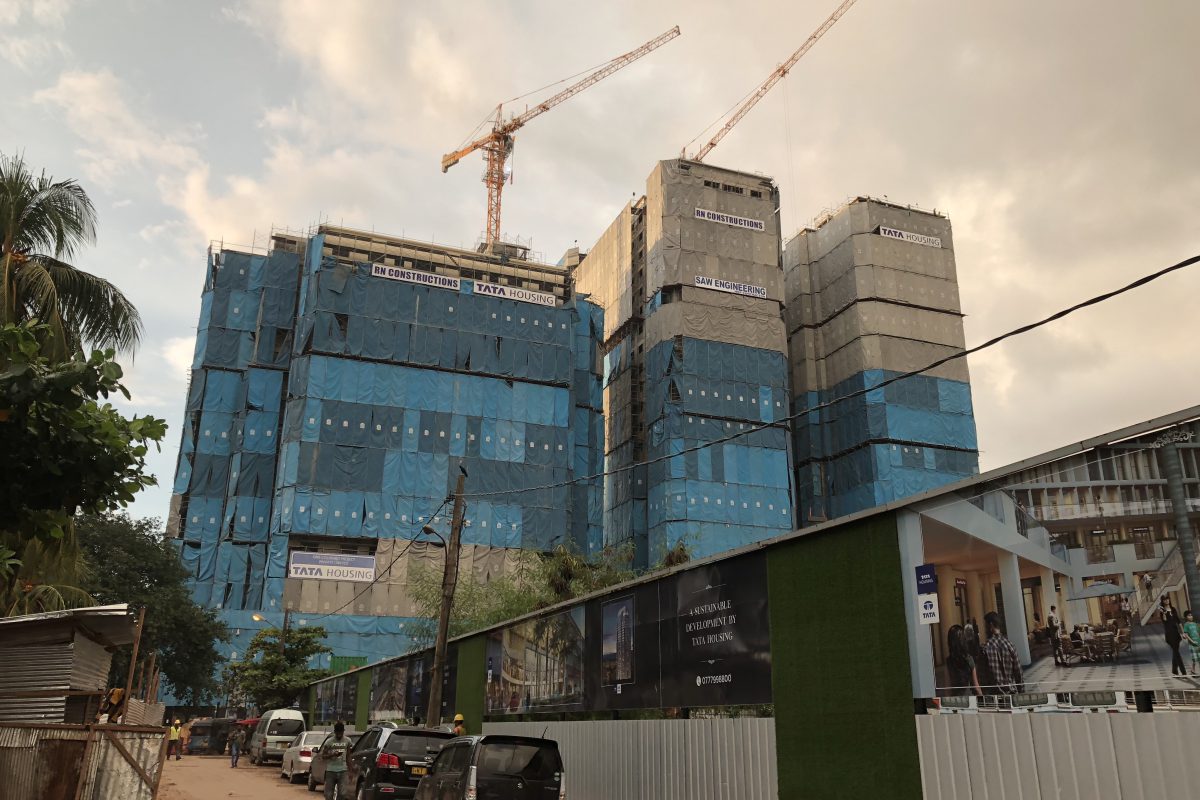
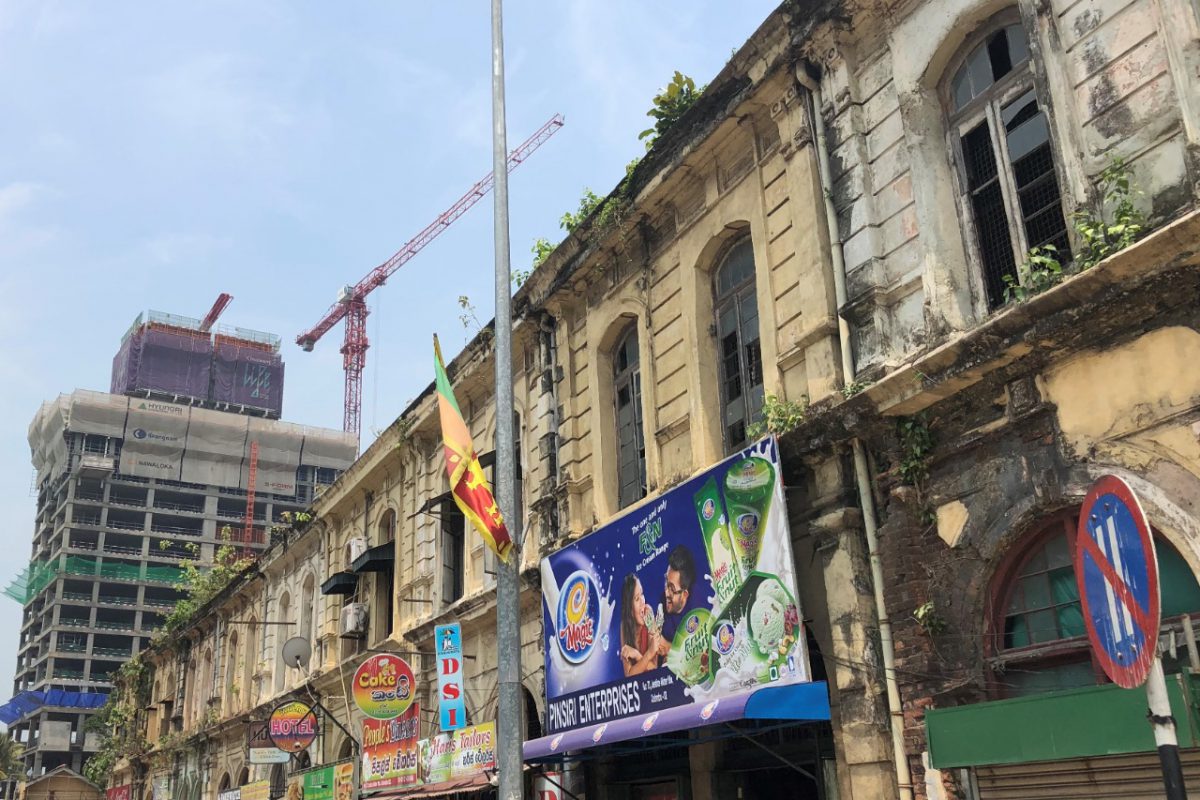
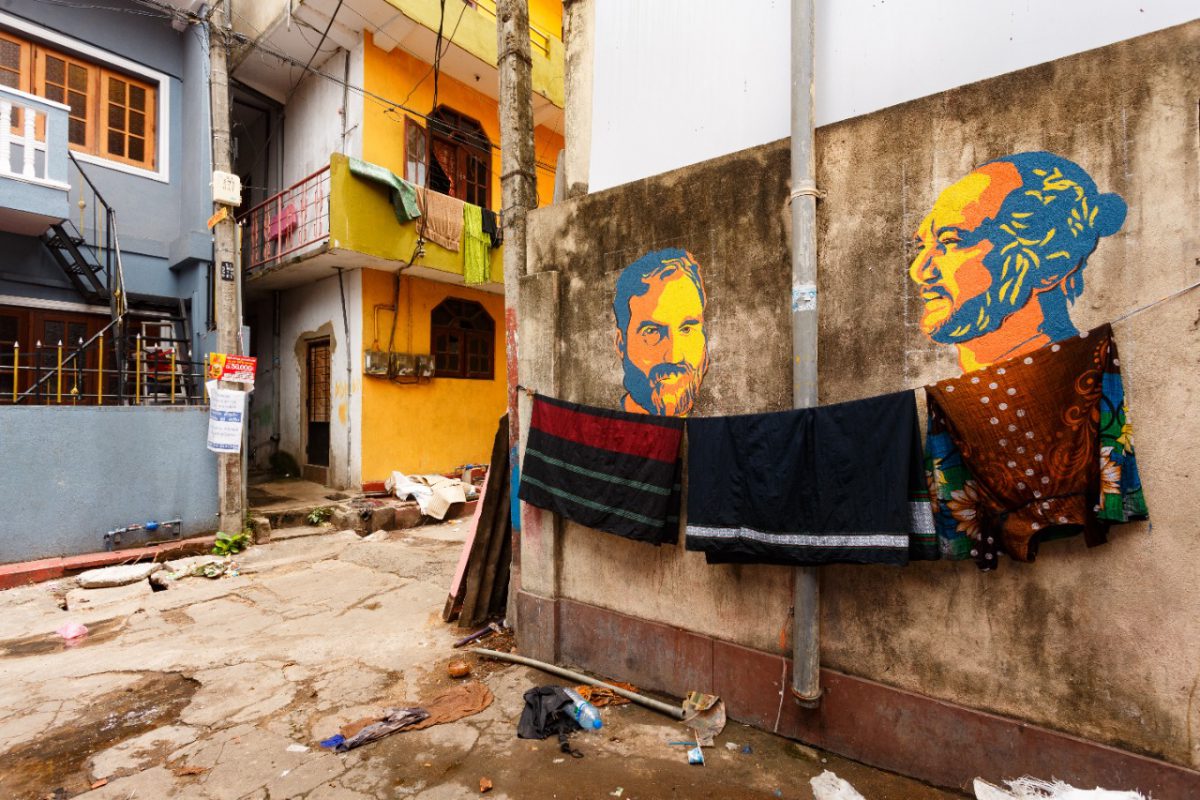
Local artists Firi Rahman and Vicky Shahjahan started #WeAreFromHere in 2012, a visual project portraying the people that make up the unique neighbourhood of Slave Island. Their wall murals feature familiar faces from the community: sportspeople, street vendors, mechanics, musicians, actors and artists. Firi shares: “#WeAreFromHere showcases the people who make Slave Island a fascinating, unique and diverse place. There are many places that have been demolished or damaged already, like the popular Castle Hotel and the Java Lane mosque. There are many more places, of which we don’t know whether they’ll still be here in a few years’ time.”
But more than just the buildings, the project wanted to document the local community. They collected stories from ordinary and extraordinary residents and turned them into wall murals. Firi adds: “It’s a time of rapid change for us, and we’re all adjusting. I want to give people the feeling that this place — its heritage and culture — has value. With all these new buildings they may feel that theirland and their properties can be bought just like that. I tell the stories of the community, to make people feel proud of their place.”
Firi started by recording voice cuts of the conversations he was having, and he was soon joined in his artistic journey by local artists Parilojithan Ramanathan and Vicky Shahjahan. Wanting to make it more interactive, the trio decided to draw portrait murals of the people around Slave Island. “We first wanted to make one big mural, but then decided to spread them through the neighbourhood to better blend in with the urbanfabric, create less disruption and get more traction,” says Vicky.
One of the persons we ‘meet’ on the walls is Fazil, a respected member of the local society. His portrait tells the story of how here in Slave Island, funerals are occasions of togetherness for people, irrespective of their faith. We then meet ‘the captain’: a popular car repairman, Rifakath: a known rugby player and Milan: a street cart vendor, each with their own story that we learn through a set of accompanying cards. We later meet Milan in real life and buy a faluda from his cart. “It’s like a treasure hunt, but with people! You get a card of a person, and you have to find the respective wall mural. The idea is not just to get to know a person, but also to find out how they matter to the community.”
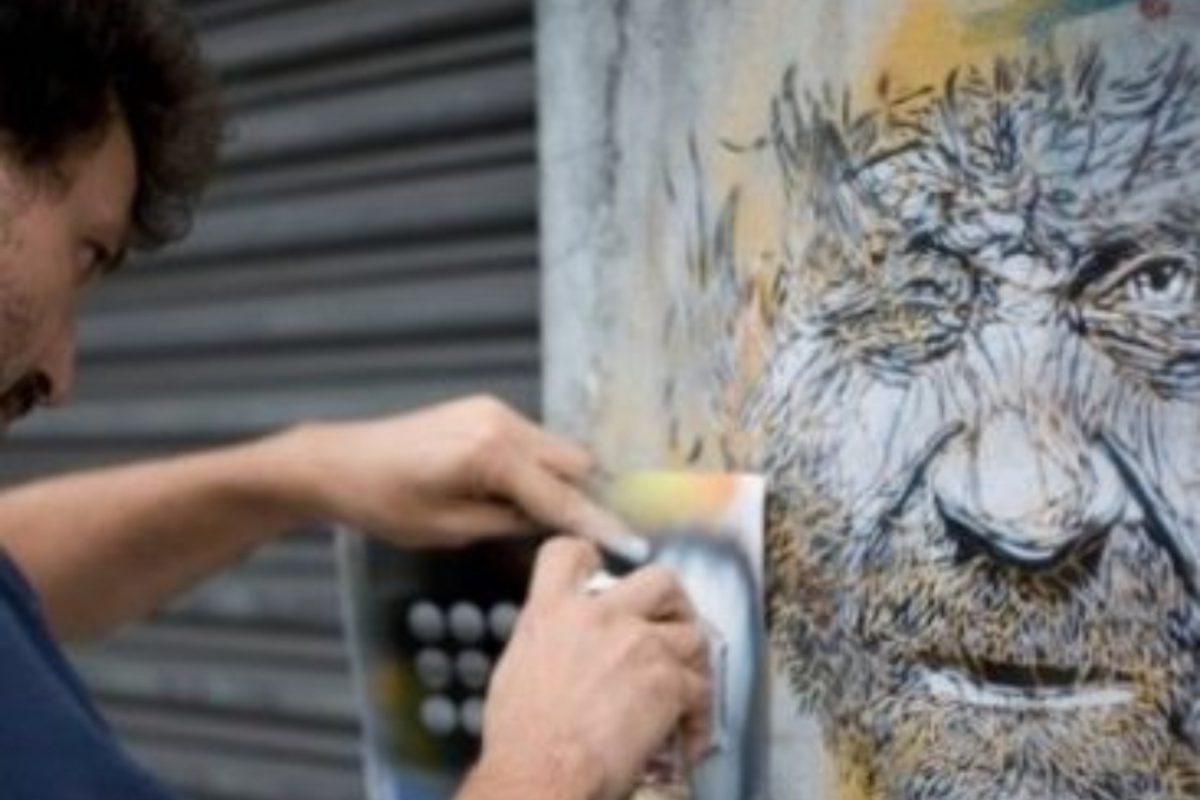
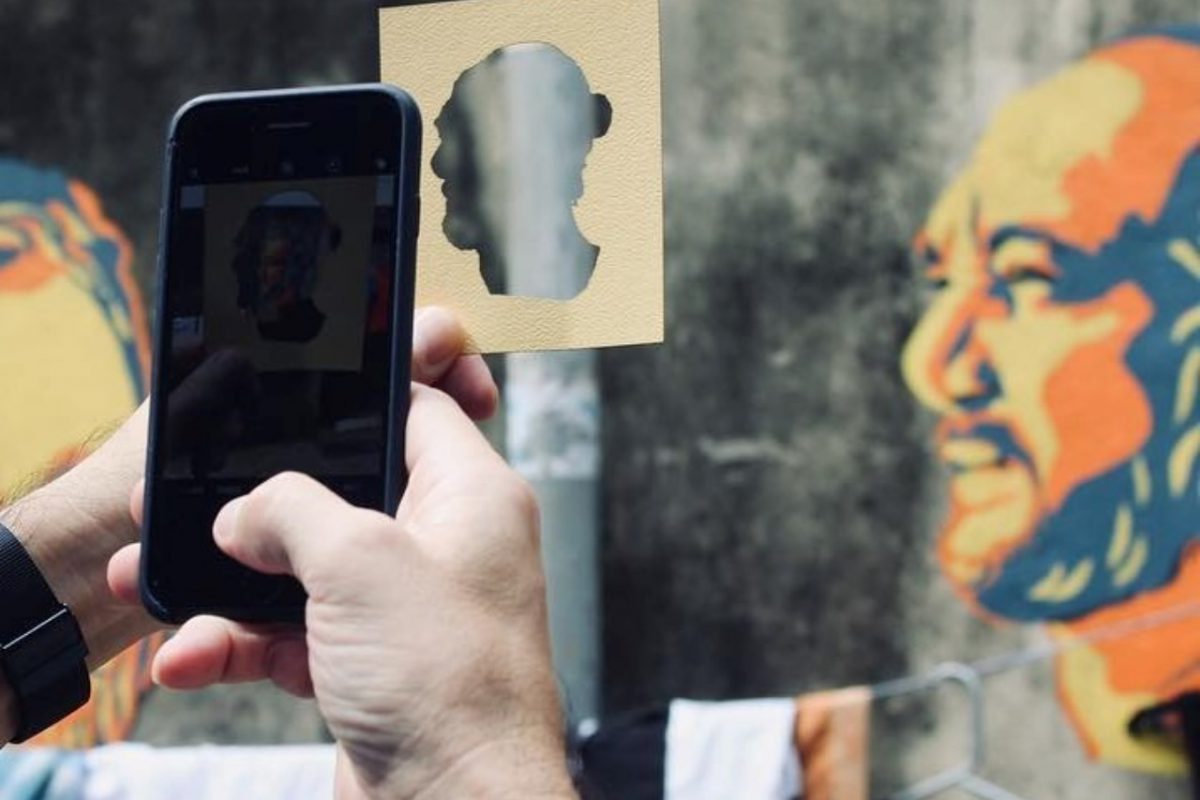
The mural project proved a trigger point, an outlet for many concerned citizens and an opportunity for them to communicate the value of this place to others. What followed was a series of #WeAreFromHere walks, talks, exhibitions, gatherings and celebrations. The effect of the project was that Slave Island’s many little laneways were uplifted and connected with an invisible artistic thread. What started as an art project has become the face of resistance against the whims of big developers, and the voice of a unique community.